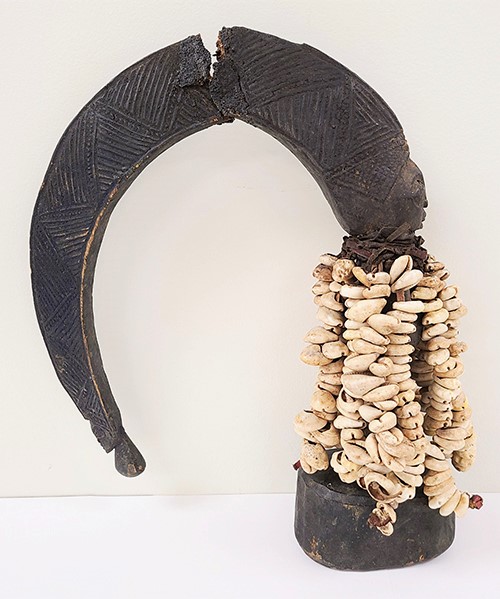Yoruba Eshu Figure

This Nigerian shrine figure represents Eshu, a trickster deity, or orisha, in traditional Yoruba religion. As a trickster, Eshu enjoys confusion and is mischievous and unpredictable. Despite this, he ultimately works to promote order and harmony. He is responsible for both good and bad changes in life. As orisha of the crossroads, Eshu signifies possibilities and opportunities.
Eshu also serves as a messenger between the mortal world of humans and the spiritual realm of orishas and ancestors. He enables communication with deities and delivers sacrifices to other orishas. Eshu shrine figures are often festooned with cowrie shells or money, as this one is, to convince him to deliver messages rather than play tricks. Eshu requires constant appeasement, which is why figures are commonly found in shrines or on domestic altars.
Eshu is often portrayed as having two faces, representing both trickery and opportunity and indicating watchfulness. Although generally referred to as “he,” Eshu has both masculine and feminine qualities that are often represented in the dual faces. On this figure, the second face is at the end of the his distinctive long hairstyle.
With the arrival of Christian missionaries in Yorubaland, Eshu was conflated with the figure of Satan. In African Diaspora religions, Eshu became Elegba or Papa Legba. The significance of crossroads throughout the Diaspora is also tied to Eshu.
The Lam Museum frequently uses this figure to teach about African religions in Anthropology, Religion, and Art History courses at Wake Forest. Due to the failure of an original repair in the figure’s elaborate hairstyle, it must be repaired and stabilized before it can be exhibited or used in teaching again. We are currently raising money through our Conservation Fund to make these repairs. Learn more here.
